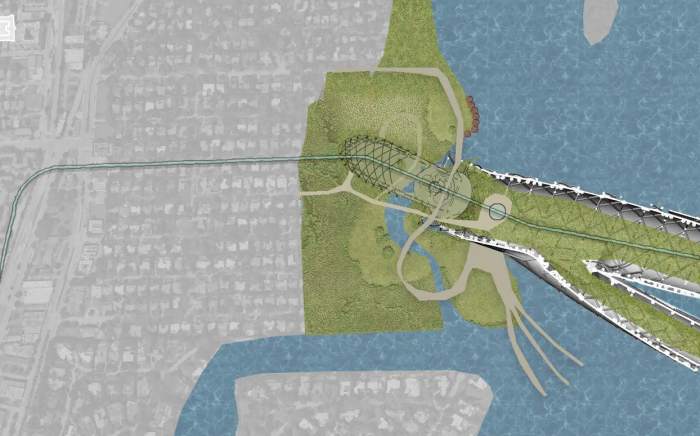LIVING BRIDGE
Miami, Florida
Academic Year
Fall semester of 2019
Instructors
Susan Conger-Austin
Paul Endres
Criteria
Demonstrate an idea of an inhabited bridge made of bamboo that would be constructed in 200 years
Accommodate 100,000+ inhabitants
Span a minimum of 2 miles (3.2 km)
Site visit to experience and investigate the existing culture and climate
Description
The entirety of the bridge was conceptualized in a team with 4 other students. We decided to split the mega project into 4 primary “nodes” that represented the basic human necessities of the future.
These nodes were recreation, crop harvesting, shelter and mental health.
Each of us focused on a single node with one student that developed a transportation system.
My focus was to develop a design strategy for the recreation node. We delegated the recreation node to be the primary entrance node as it can attract public interest and interaction from the mainland.
Re observing nature in a borderless yet naturally confined space.
Multi-sensory paths that loop and connect people with nature.
I envisioned the recreational needs of the future to have a stronger admiration for observing the interactions of animals and plants. Unlike current times, the animals would be free to roam in borderless yet naturally confined spaces. This further leads to environmental field studies and microbiological research spectrally located beyond the recreational node as the program also informs food production.
The remainder of the bridge flows into the other nodes that were graphically produced by the other teammates (not shown in this composed gallery) of food production, residential neighborhoods and ending (or beginning depending on where you start) with a sense of mental resonation and reflection.










